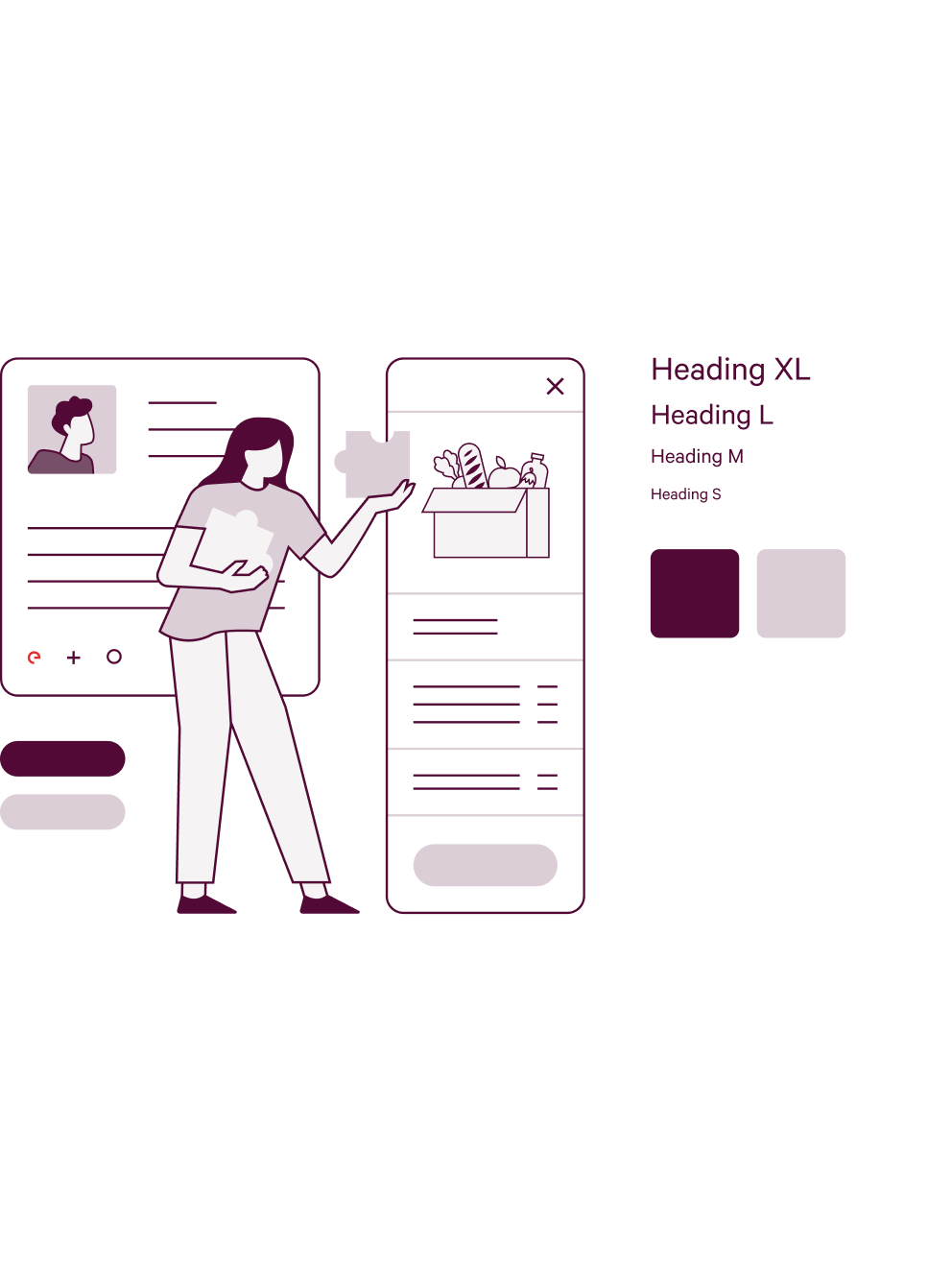Design System: maakt het ontwerpproces nu efficiënter
Digital designers waren ooit de personen die per pagina zaten te puzzelen en tekenen. En bij nieuwe ontwikkelingen moesten zij hele pagina’s opnieuw inrichten. Door het toepassen van een Design System hoeft dit niet meer. Een Design System is een set aan elementen geordend in mapjes en gemaakt via vaste patronen en afspraken dat gebruikt wordt om het ontwerpproces van digitale producten zoals websites, apps en computerprogramma's efficiënter te maken. Ze bestaan uit een verzameling van herbruikbare instructies voor een computer, zogeheten componenten, en worden gebruikt binnen meerdere vakgebieden.
Binnen een Design System kunnen, naast de componenten, de te gebruiken kleuren, lettertypen en andere stijl vormen worden vastgelegd. Een component bestaat uit een instructie voor een computer die regelmatig voorkomt, bijvoorbeeld een button of knop op een website. In plaats van zo'n button of knop herhaald te programmeren, wordt er een component van gemaakt. Door de component aan te roepen verschijnt de knop op het computerbeeldscherm. Een component zelf kan ook weer opgebouwd zijn uit een aantal subcomponenten. Een component is universeel en door het gehele digitale product te gebruiken. Door meerdere componenten samen te voegen ontstaat een digitaal product.
Projecten worden niet meer door één designer uitgevoerd, maar door een gespecialiseerd team, dat zorgt voor consistentie en kwaliteitsborging bij de werkzaamheden. Door deze eenduidige aanpak wordt versnippering van werkzaamheden voorkomen. Dit leidt tot een sterk en consistent design dat bovendien makkelijker en goedkoper aanpasbaar is en door kan groeien met alle bestaande en toekomstige media.
‘Wij hebben een huisstijlhandboek’
Vroeger had elke organisatie een huisstijlhandboek dat diende als leidraad. De plek voor het logo, de merkkleuren en lettertypes. Netjes uitgeprint, ergens onder in de kast. Of diep in de totale chaos van mappen op het intranet.
Ondertussen gebruikte elke communicatiemedewerker, stagiair en manager zijn eigen versie van de (design) waarheid in de externe uitingen. Om nog maar niet te spreken van de onsamenhangende interne samenwerking tussen design en development teams, door de versnipperde design standaarden.
Er is echter één leidraad nodig die altijd toegankelijk is voor iedereen. Deze staat centraal in elke digitale en communicatieve uiting van de organisatie. Die leidraad wordt gebruikt voor het bouwen van digitale platformen én het digitaal communiceren.
Ontdek casesDesign System als basis voor een sterk merk
Apple, IBM, Microsoft, Google, Airbnb, Lonely Planet, Salesforce, zijn stuk voor stuk bedrijven die Design Systems succesvol hebben geïntegreerd in hun bedrijfsvoering. IBM heeft bijvoorbeeld het Carbon Design System. Daarmee hebben zo’n 130 bouwteams alle gestandaardiseerde bouwstenen voor IBM-applicaties binnen handbereik. Dit is een enorme tijdbesparing voor het productteam van IBM: geen herhalende briefings, niet keer op keer huisstijlelementen aanleveren, veel minder controle en bijsturing op de belangrijke brand identity-details, zoals typografie, beeldgebruik, beleving en uitstraling.
Enkele voordelen van een Design System zijn:
- Consistentie
- Betere workflow voor in- en externe front-enders en developers
- Geen herhalende briefings over kleuren, typografie en design
Richt het Design System in
Benieuwd hoe Snakeware door middel van een Design System ook voor jouw organisatie betere designs met tijdsbesparing en consistentie realiseert? Dan kunnen we samen aan de slag en creëren en leveren wij het Design System aan volgens het Atomic Design van Brad Frost. Ook bieden wij trainingen met betrekking tot de opzet van het Design System.
Benieuwd of Snakeware jouw bedrijf op het gebied van design kan ontwikkelen? Neem vrijblijvend contact met ons op!
